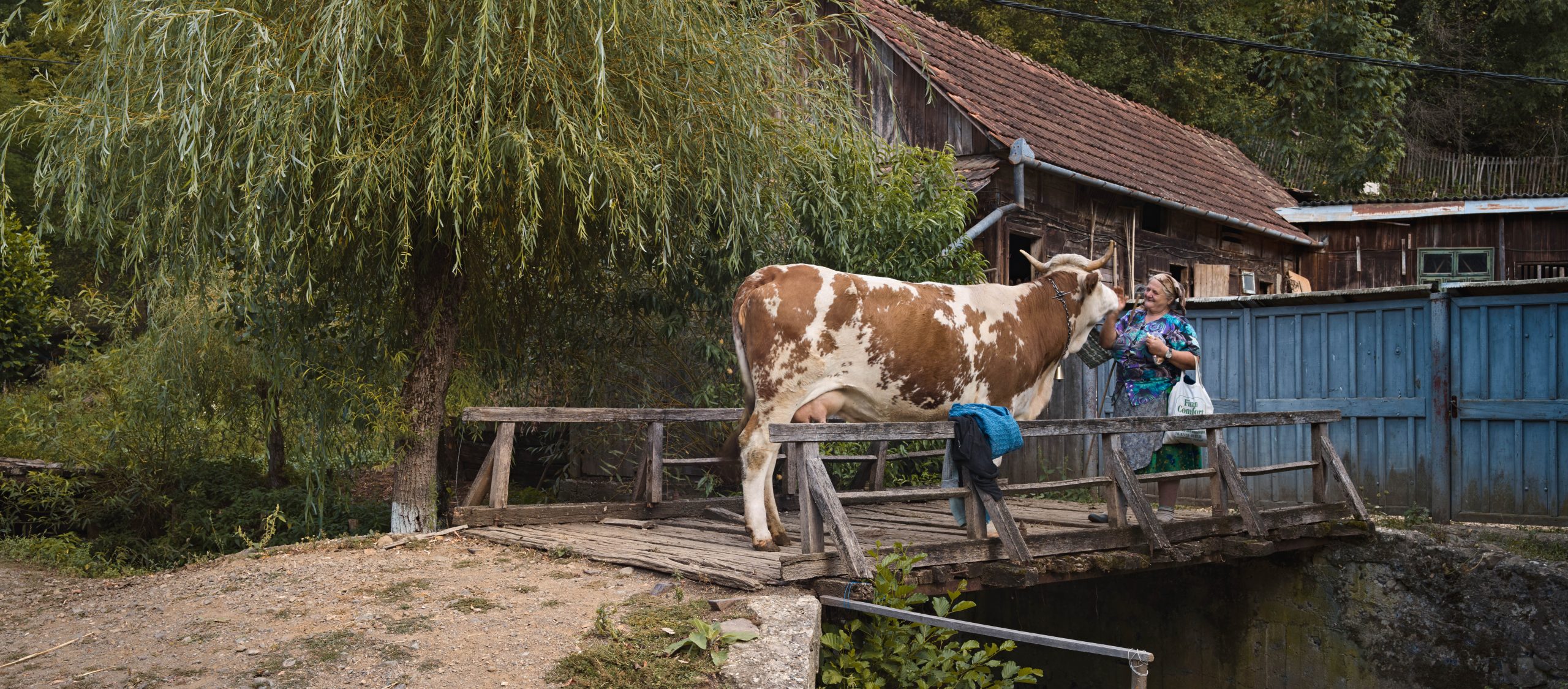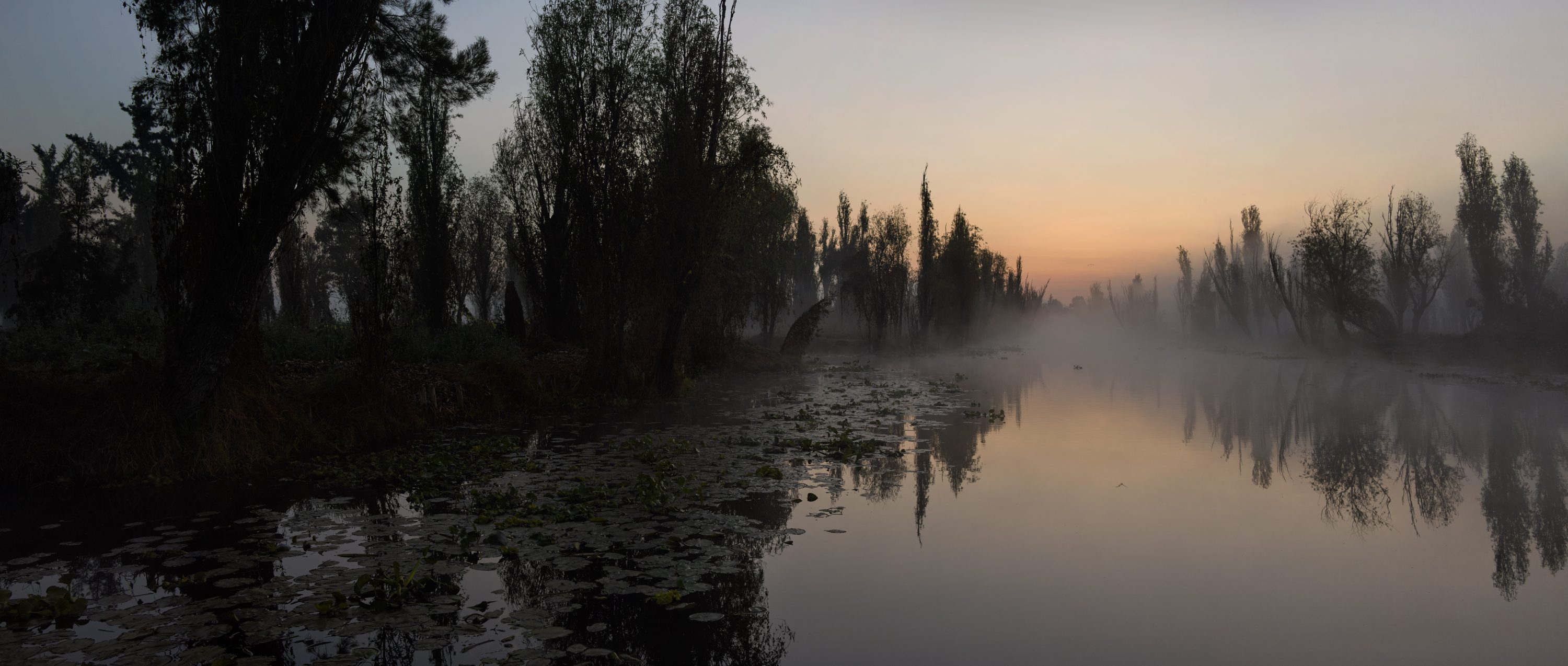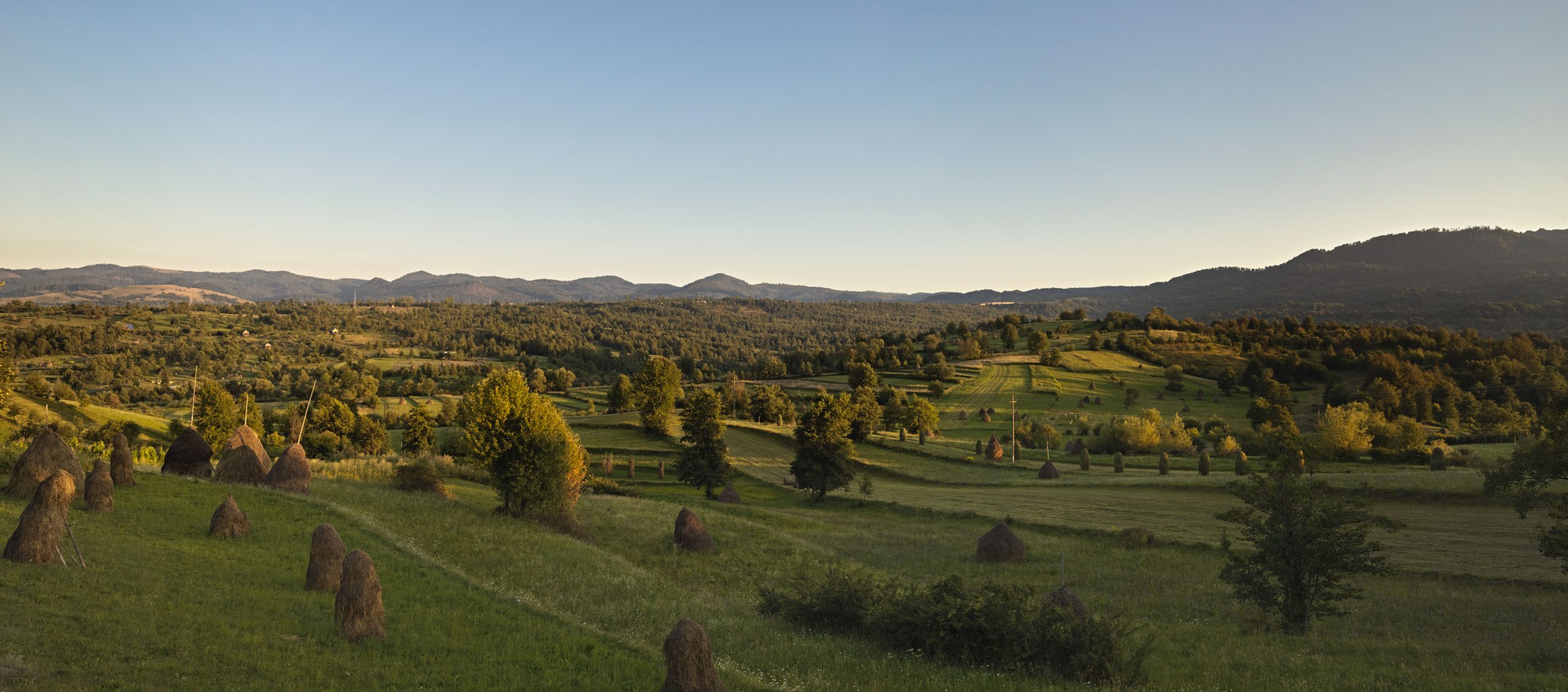
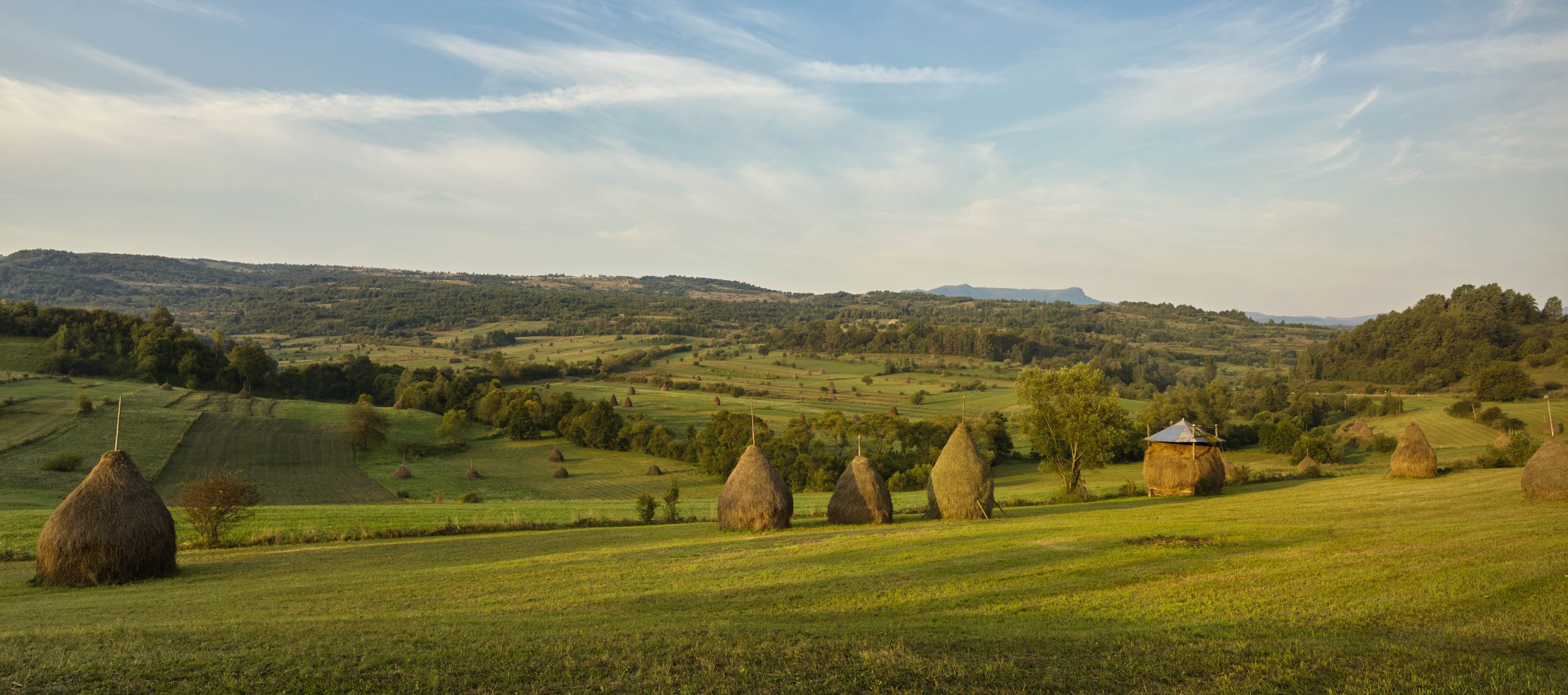

The Haystacks of Maramures
Several of the most important farmed landscapes in the European Union that have been designated “High Nature Value Farmed Landscapes” are to be found in Romania. These small-scale tended landscapes are of great economic importance.
Romania has 3.9 million agricultural enterprises, most of them family farms.
Around a million farms of between one and ten hectares cover a total of 3.1 million hectares, some 20% of all Romanian farmland.They are partially self-sufficient farms that produce food for their own consumption, for local sales and for their extended families.
These farms produce an estimated 25-30% of the nation’s food needs. In a country that imports a considerable proportion of its food, that is an important achievement.
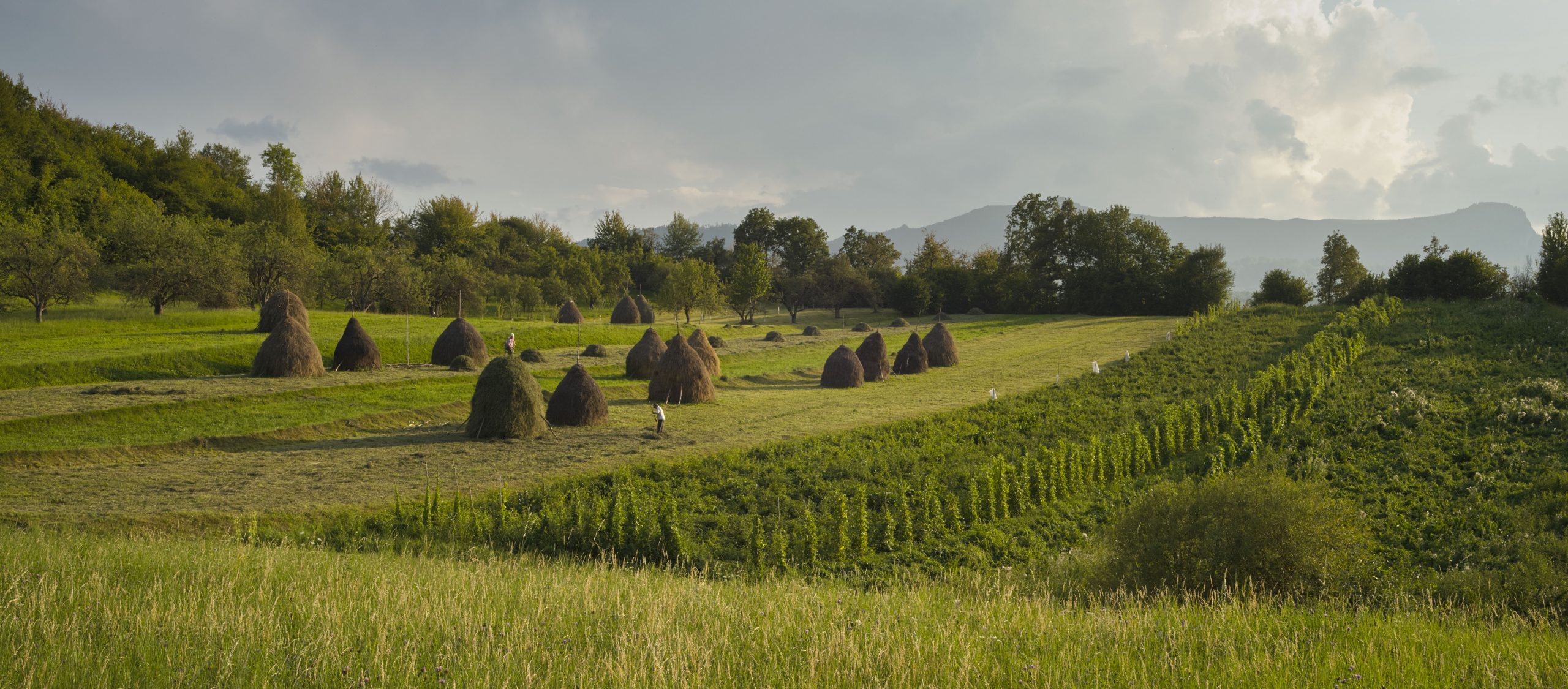
Until the mid-twentieth century, HNV farmland and forests were still widespread across much of the EU. Since then, a combination of intensification and industrialisation in some areas and simplification of management systems or land abandonment in others, has led to the large-scale loss of HNV land in the lowlands of Northern and North-Western Europe.
Extensive areas of HNV-land have survived in parts of Central and Eastern Member States and in the Mediterranean basin, but these are at risk from powerful economic pressures that lead rapidly to abandonment or intensification, with consequent loss of both biodiversity and local management skills and knowledge.
Source: Institute for European Environmental Policy
High Nature Value
High Nature Value (HNV) is a comparatively new term used to describe some of the oldest and most biodiversity rich farming and forestry systems in Europe. On this HNV land, for hundreds or even thousands of years, semi-natural habitats and wild species have been interdependent with low-intensity management by local communities.
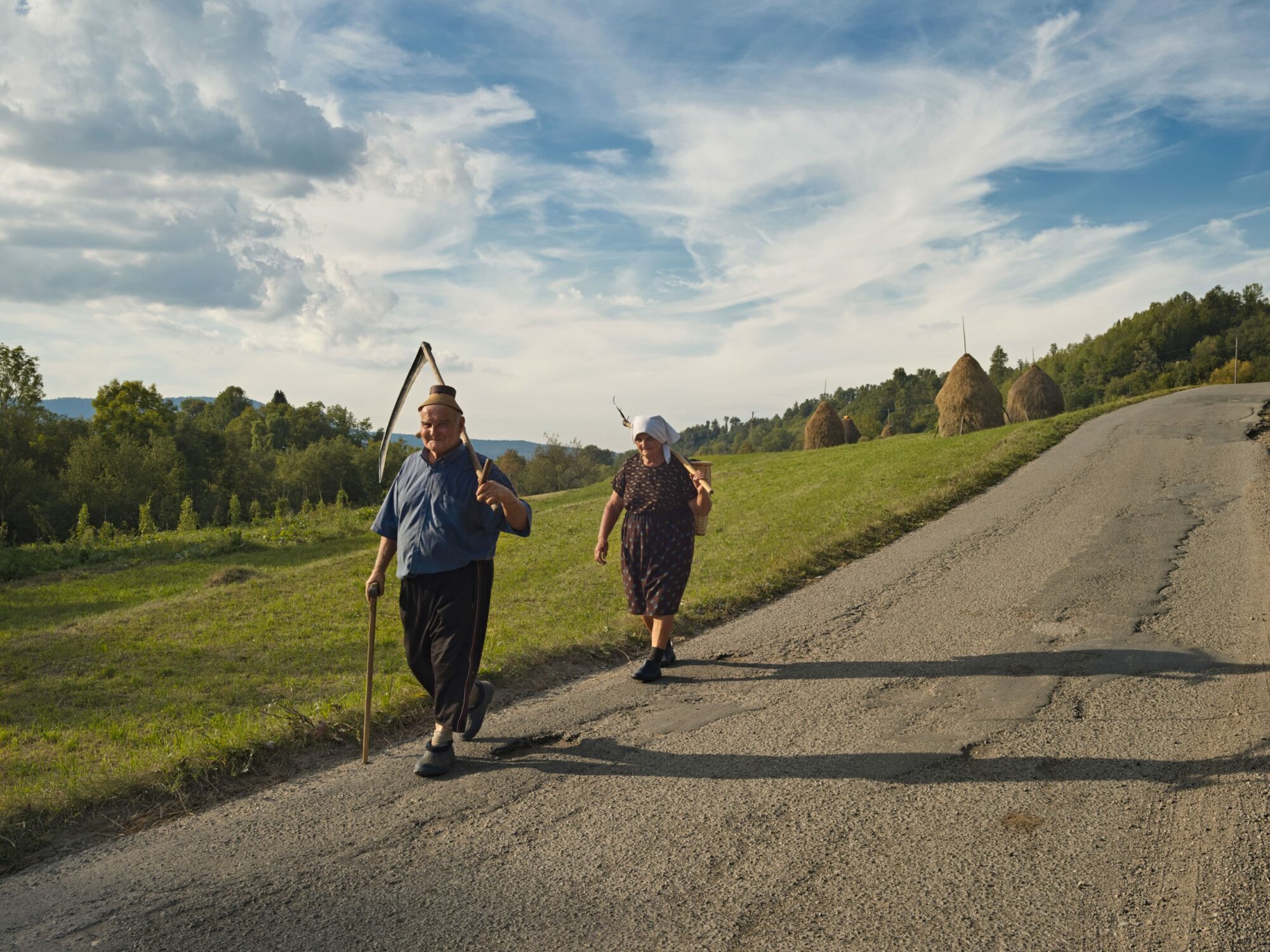
The grassy slopes of Maramureș
Anyone taking an early morning walk across the grassy slopes of Maramureș would think they are in a fairy tale.
This manmade landscape is the perfect symbiosis between nature and human activity.
Maramureș has one of the most extensive flower-rich grasslands remaining in lowland Europe, essentially unchanged for centuries.
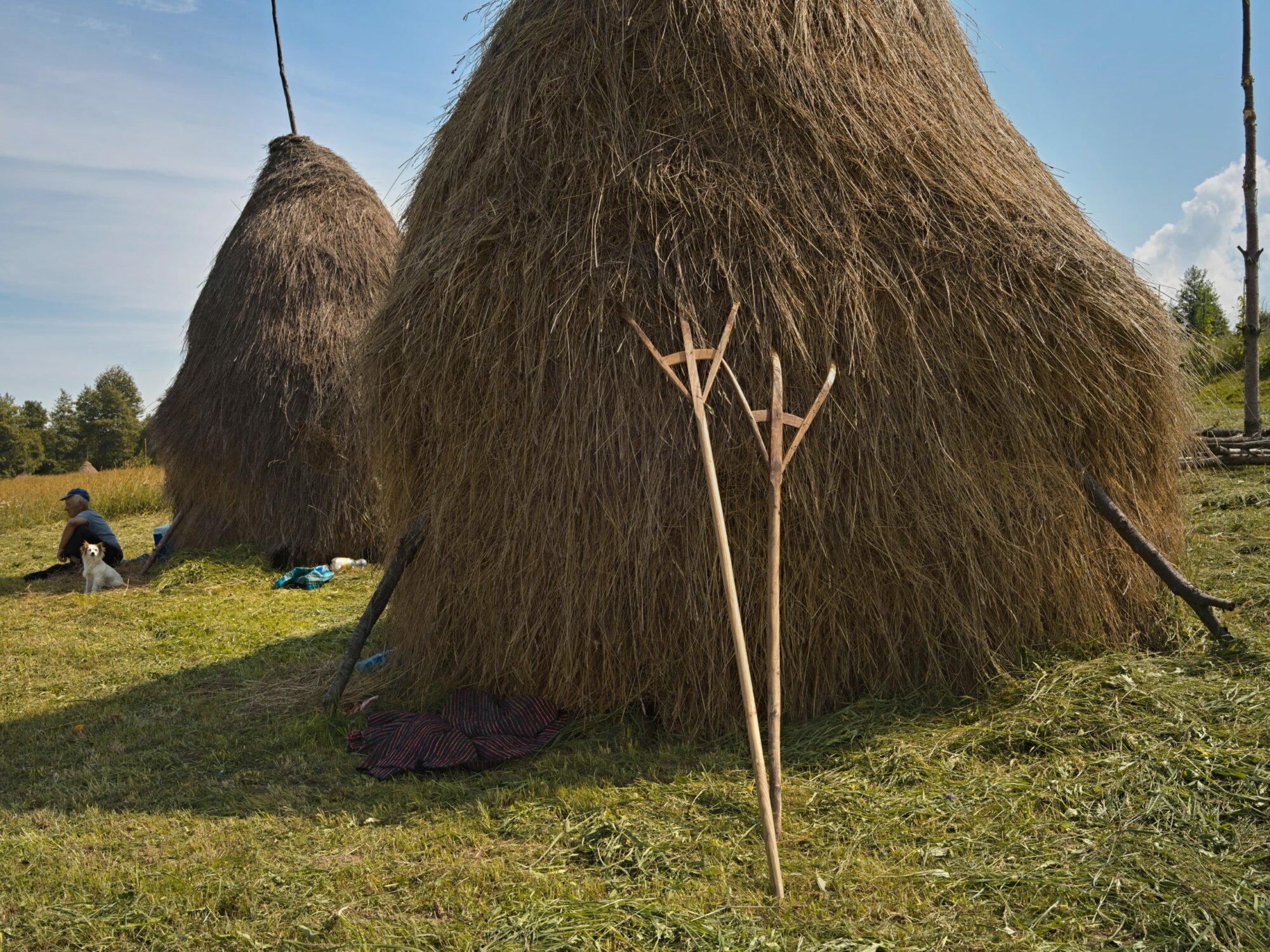
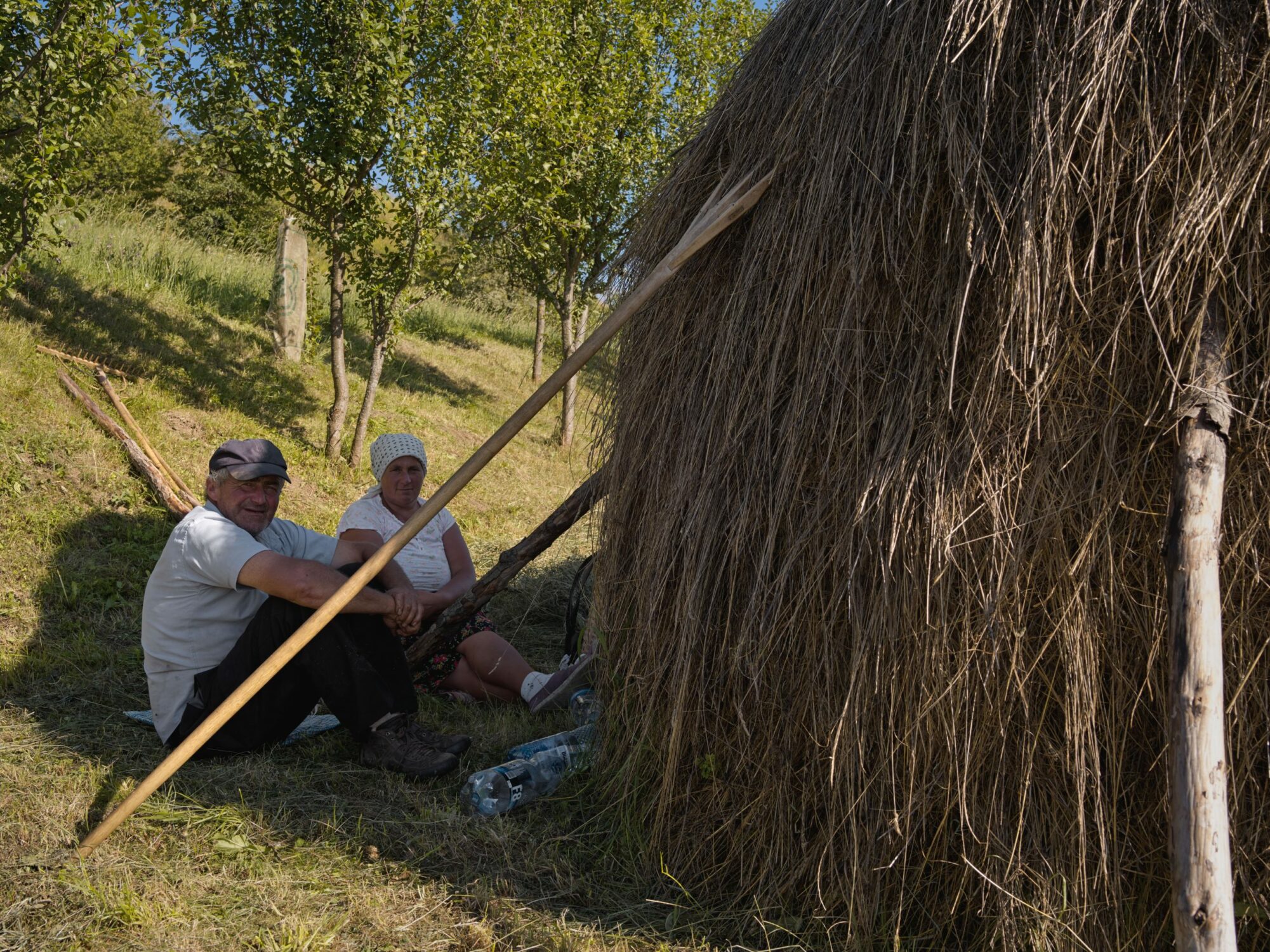
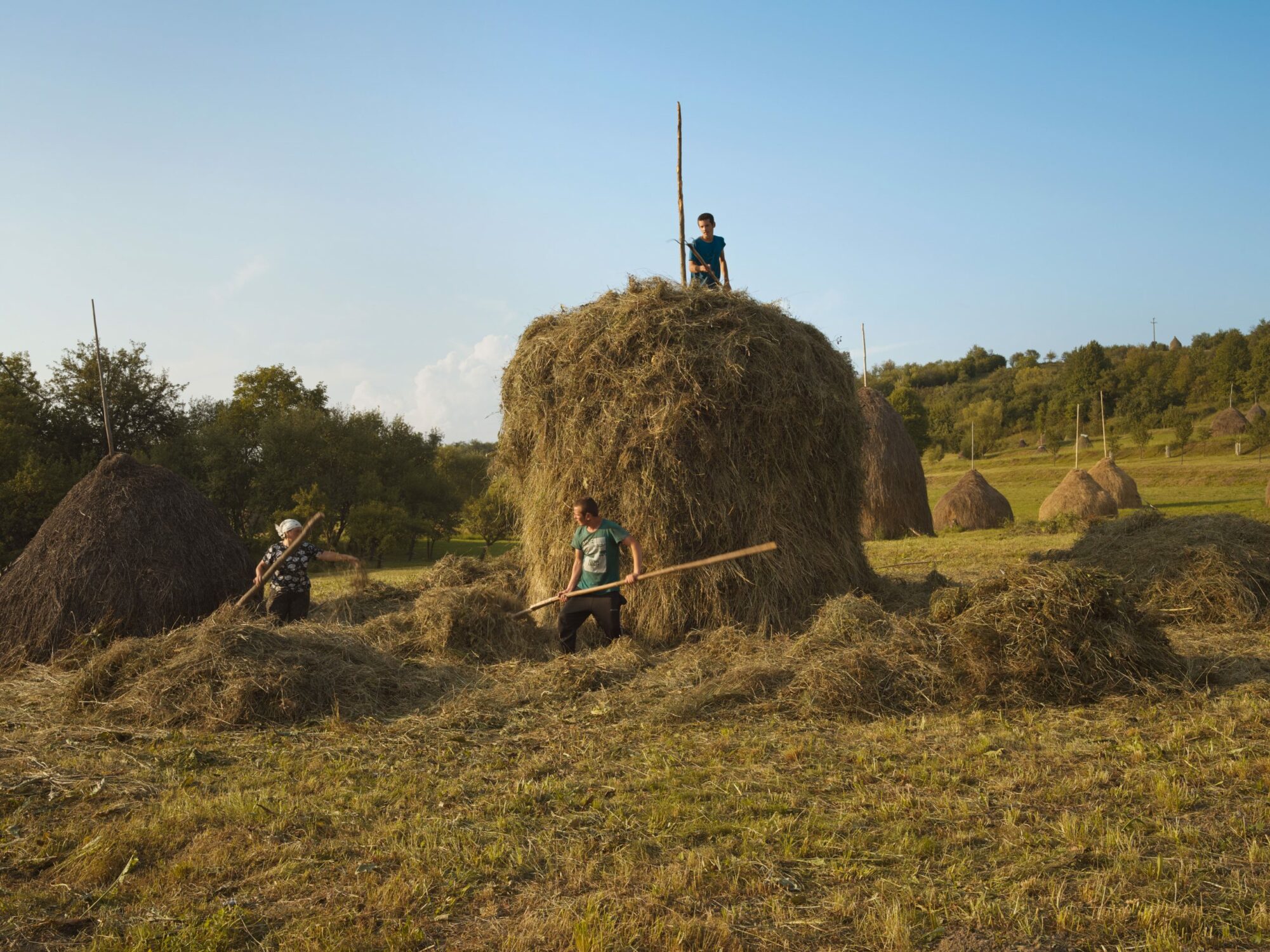
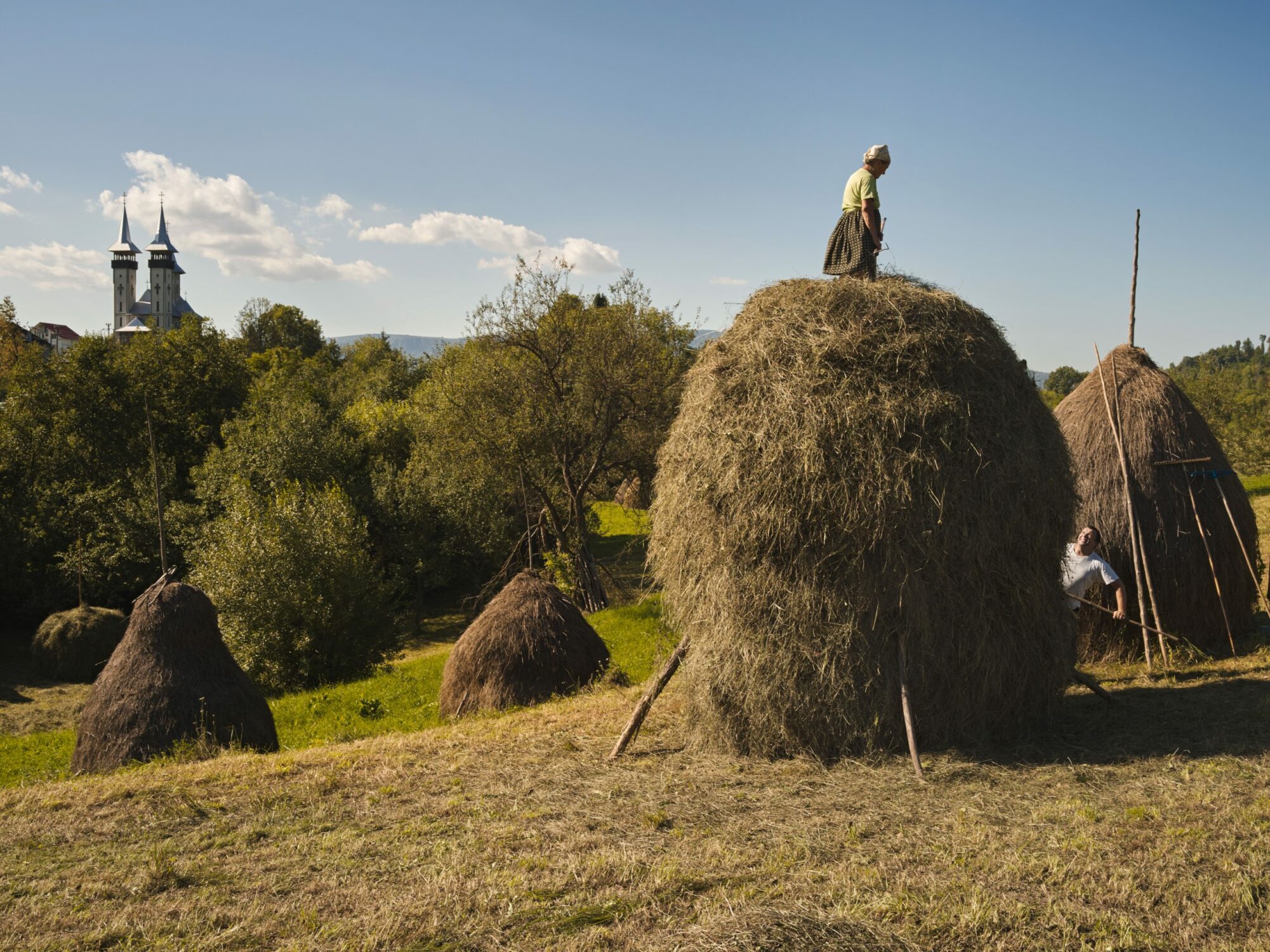
Fifty species of grass
This is one of Europe’s last-remaining areas of artificial, semi-natural landscape where biodiversity is richer than in wilderness areas.
Fifty species of grass can be found here on just a few square metres of meadow. This floriferous miracle is not maintained by nature alone, but by nature worked by human hands.
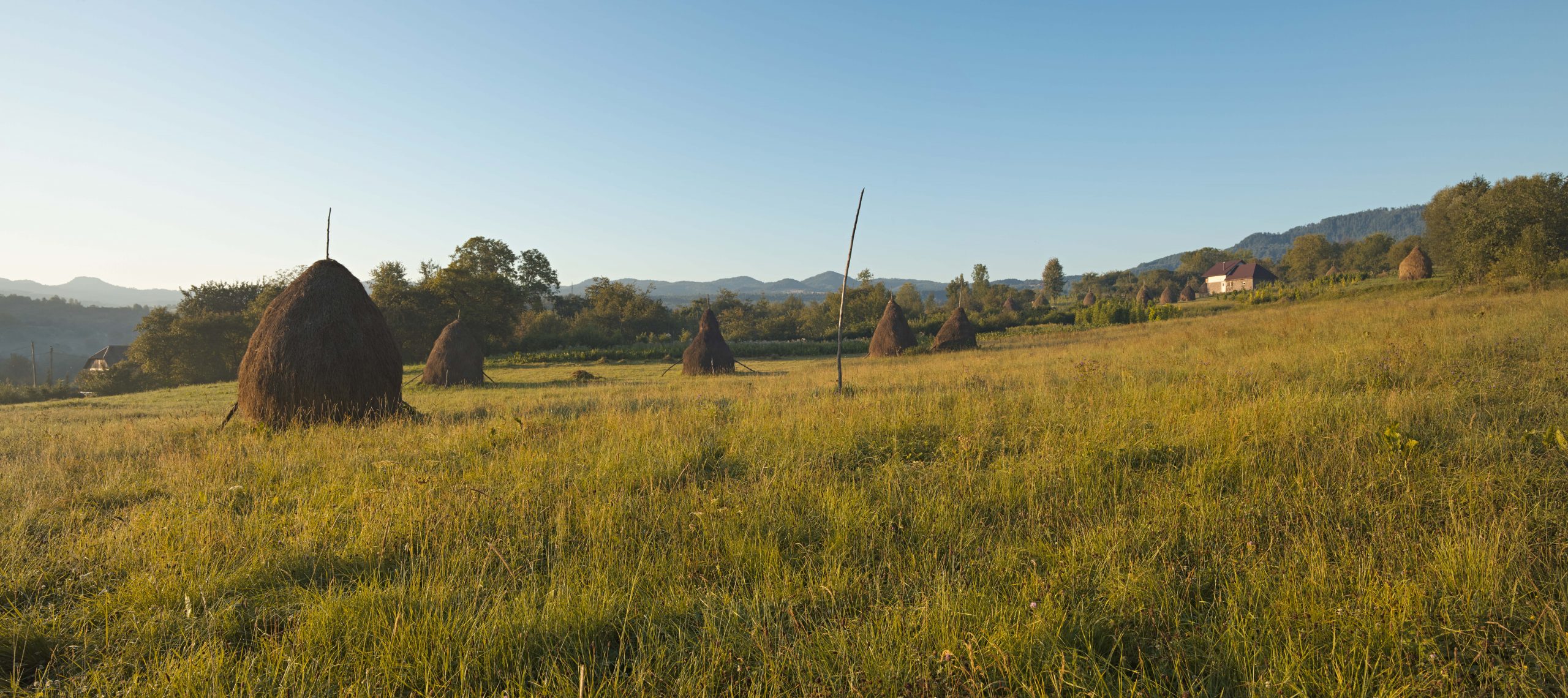
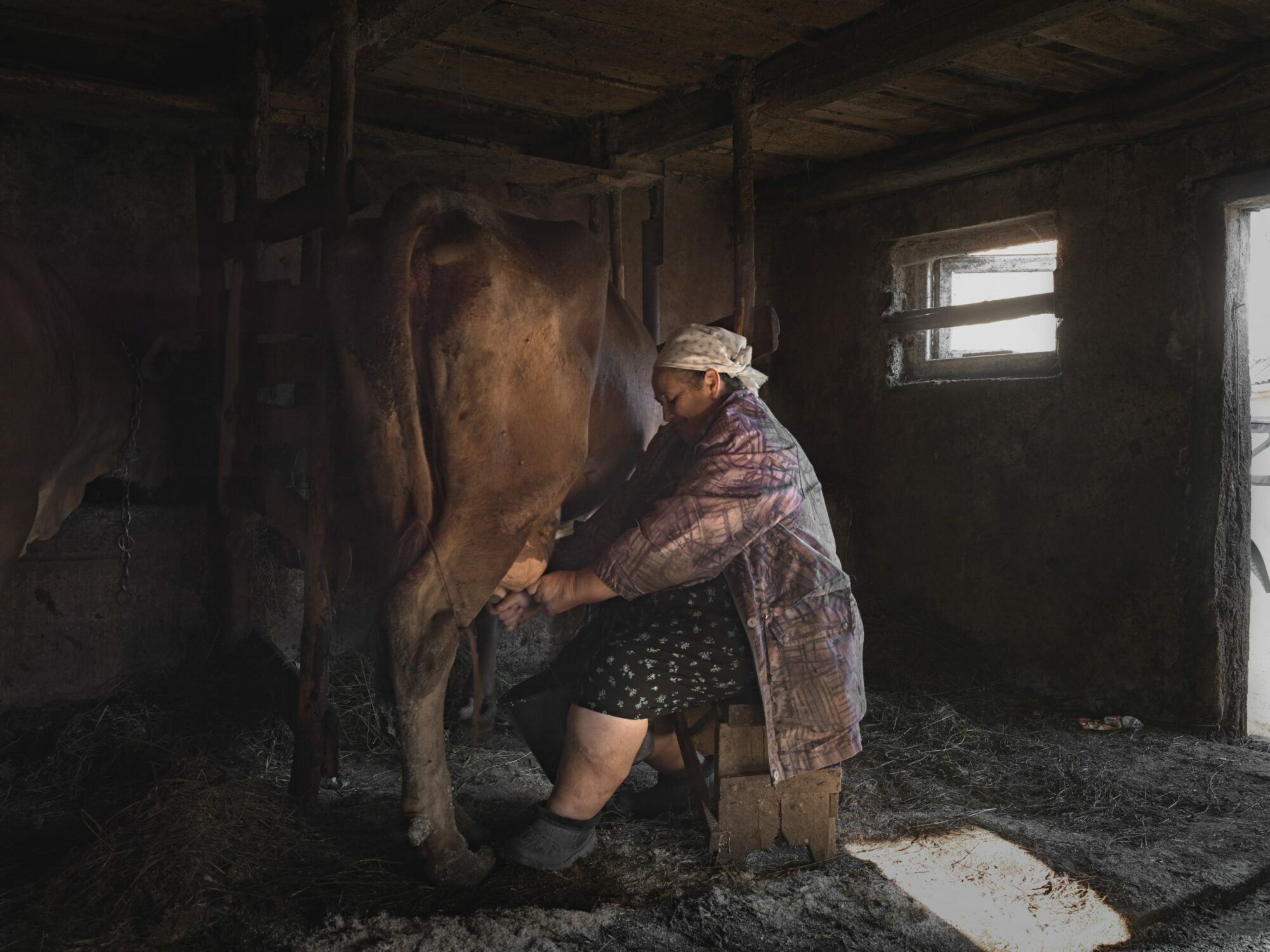
Ileana Opris,
Breb, Maramureș
Two Cows, Three Pigs and Highspeed Internet
Casa Opris is the name of our accommodation in Breb.
It’s an Airbnb run by Ioan and Ileana Opris.
They have rebuilt a traditional wooden house in the orchard, doing all the work themselves.
Everything has been made by hand by Ileana and Ioan, the carpets, the curtains and the “stergare”, the traditional hand-embroidered cloths with ancient symbols and cryptograms.
They have lived here all their lives and are one of more than a million farming families who live completely self-sufficiently.
Ileana is not only the sweetest hostess imaginable, she is also a great cook (the entire village agrees about that). She serves us homemade bread, cheese, sausage, the most delicious pies and traditional dishes. Breb is a fairy-tale place where traditions are kept alive.
The little wooden house in which we stay, the view of the landscape with the haystacks and the men and women with scythes and hayforks over their shoulders are like something out of Snow White and the Seven Dwarfs. But this fairy-tale world is a world without great riches. The average income of a farming family is some 4,000 euro per year. For Ileana and Ioan, additional income from Airbnb is a bitter necessity.
More than 60% of the milk produced in Romania comes from farmers with two or three cows. Hardly any of it leaves the farm as milk; most of it is processed right there into soft cheese, butter and crème fraîche.
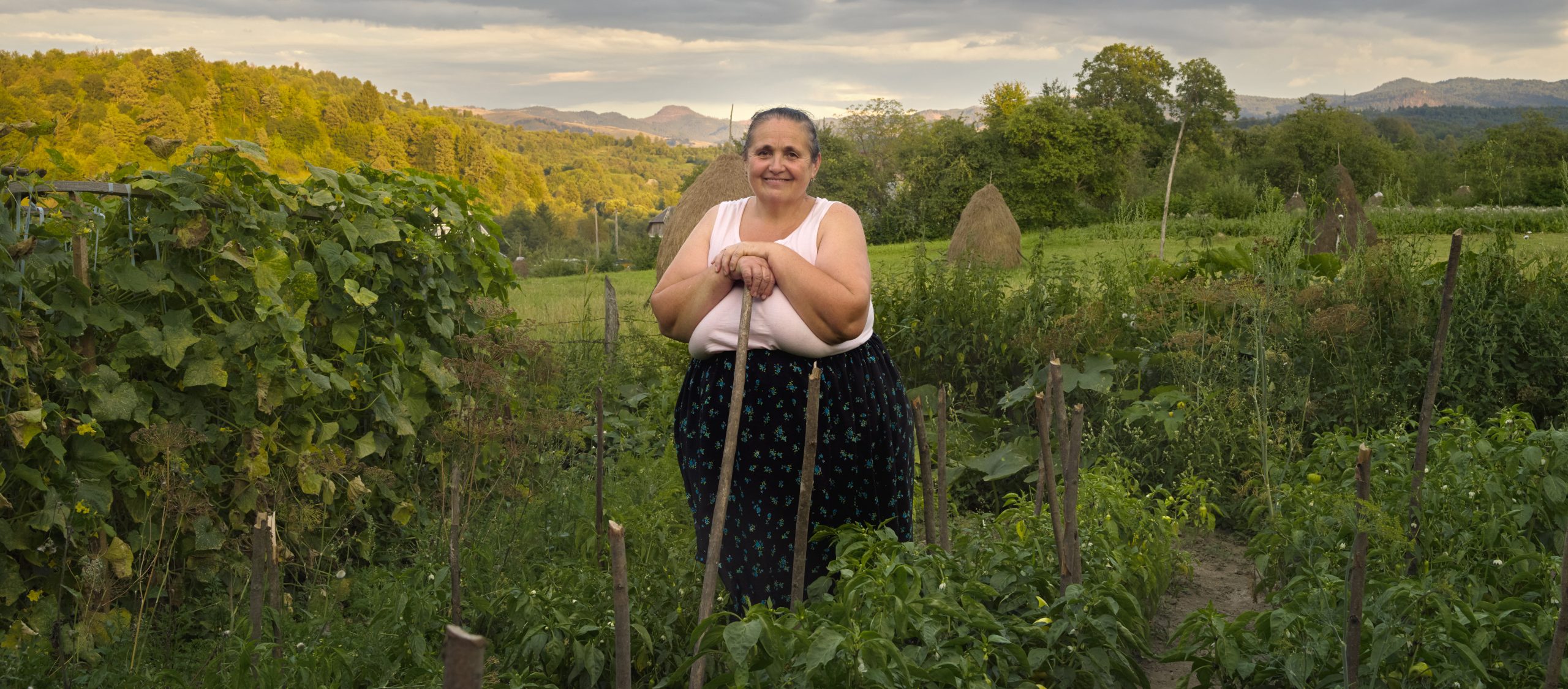
From Meadow to Plate
They keep two cows, three pigs and some chickens, and tend a large vegetable plot. The fruit from the orchard is distilled to make Horinca.
Here we experience profound feelings about the life, traditions and customs of this self-sufficient farming life.
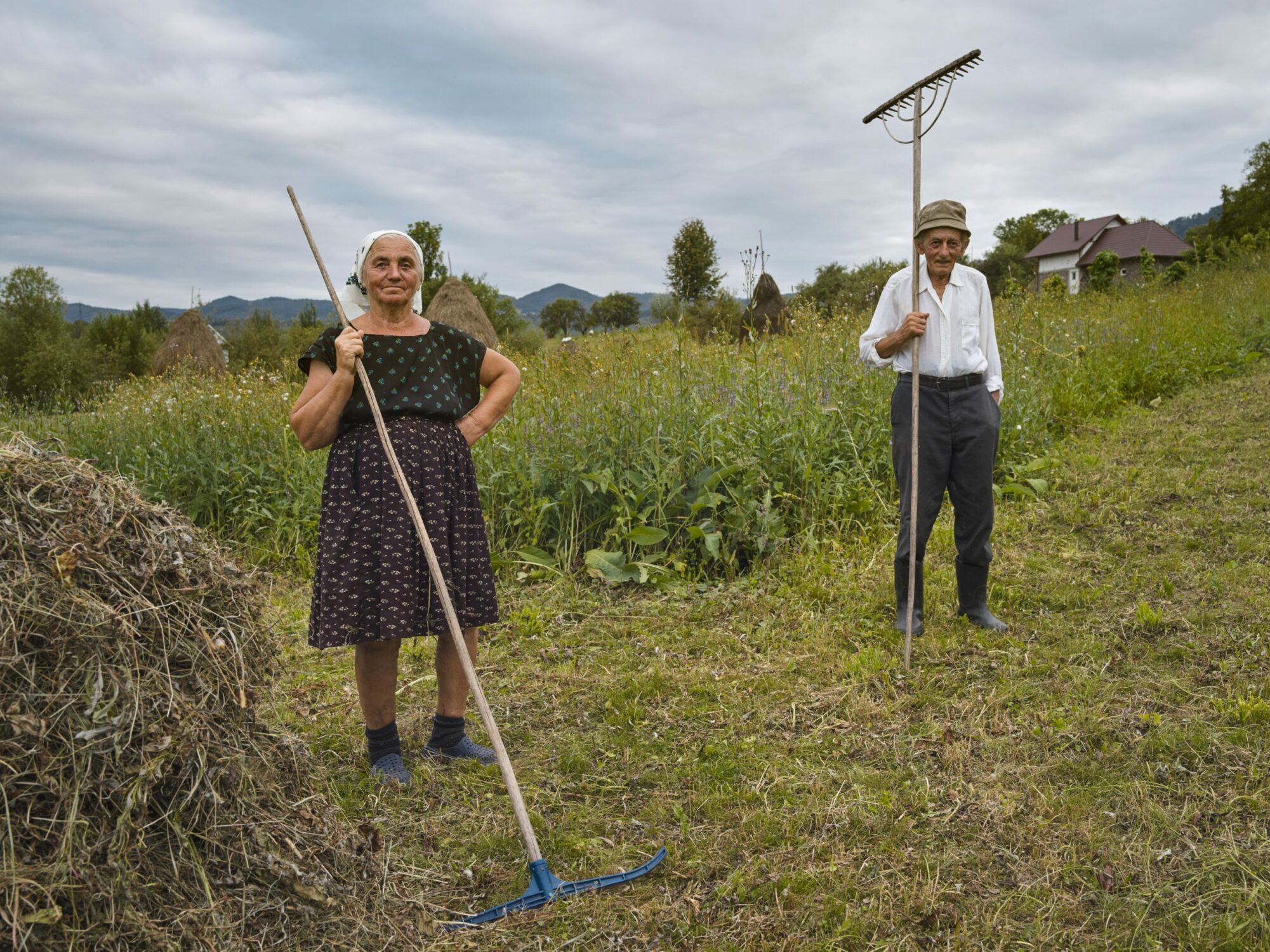
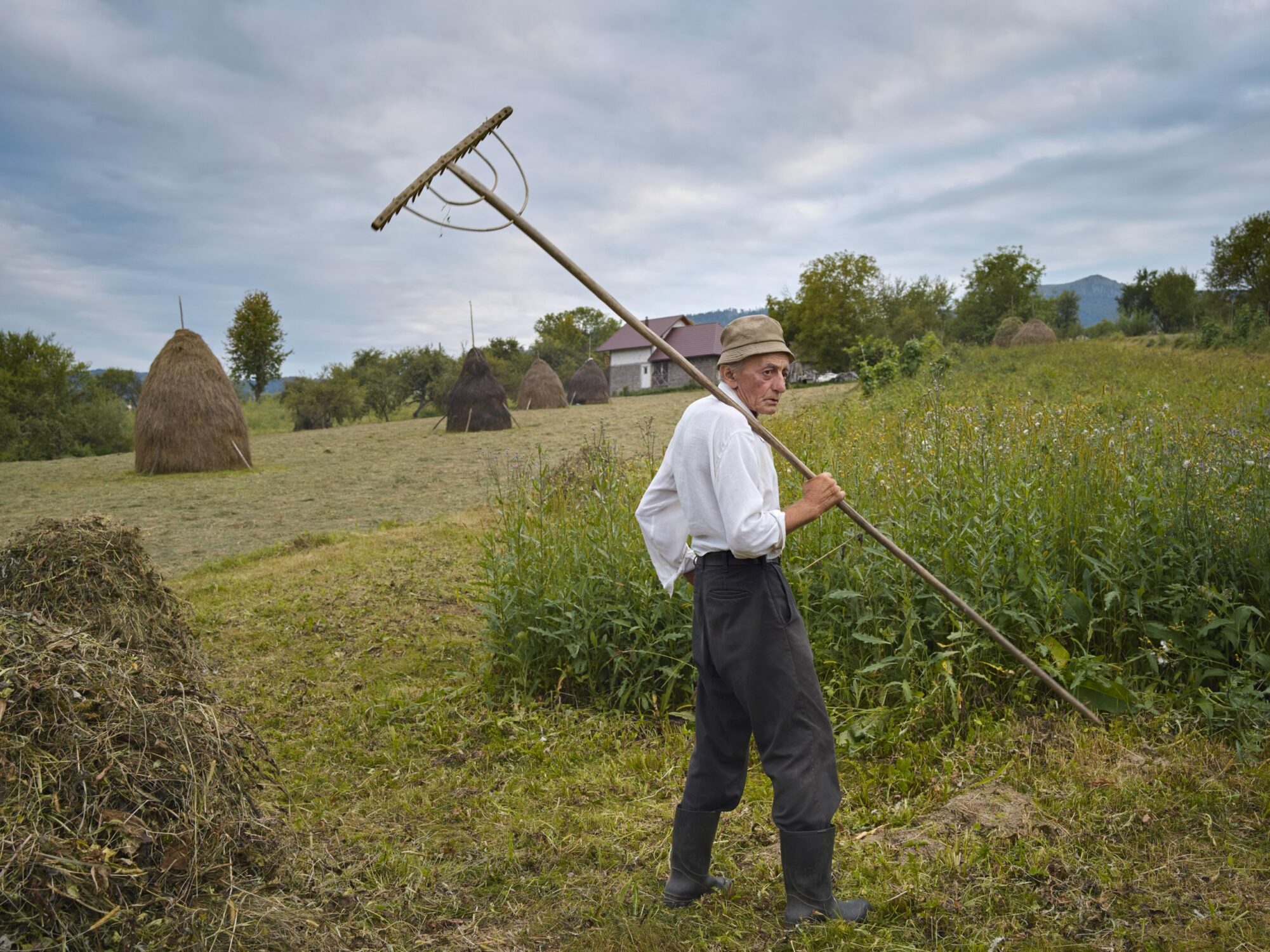
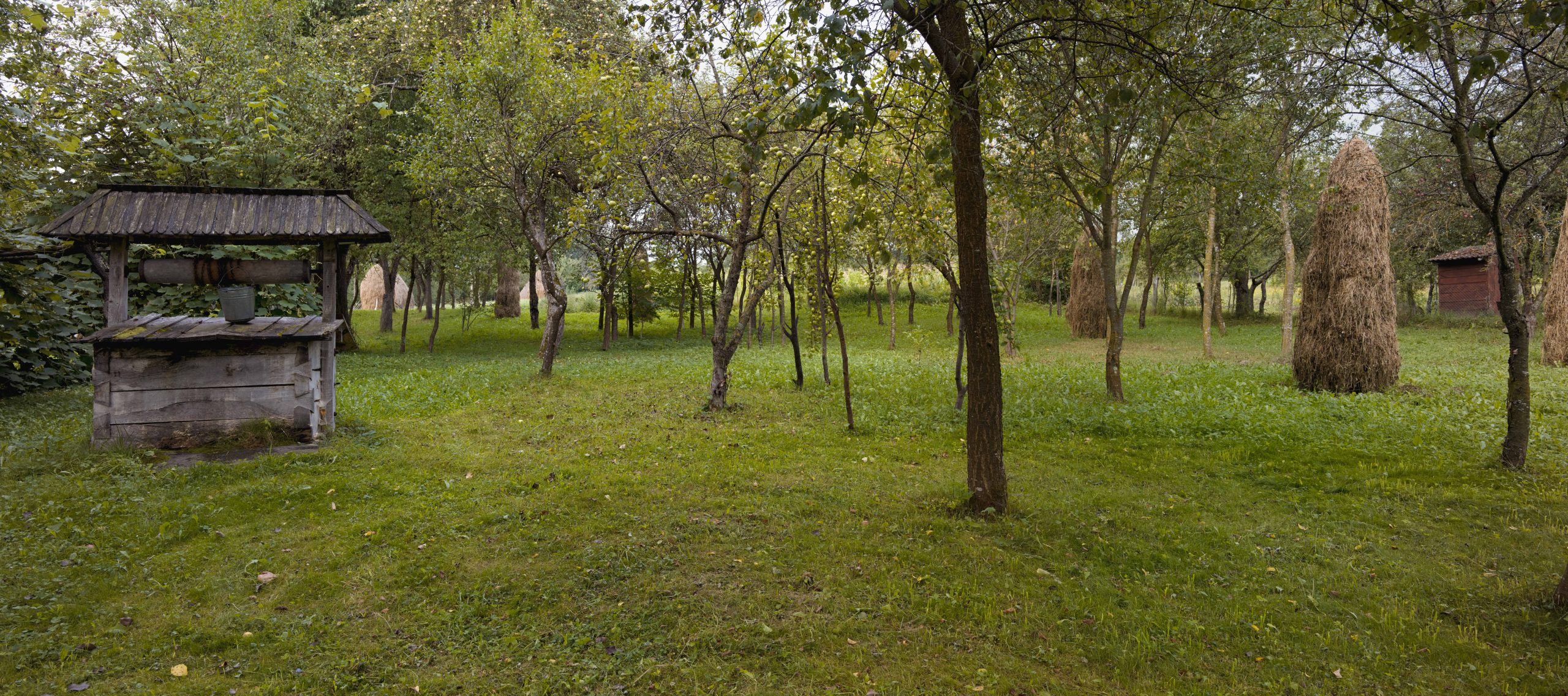
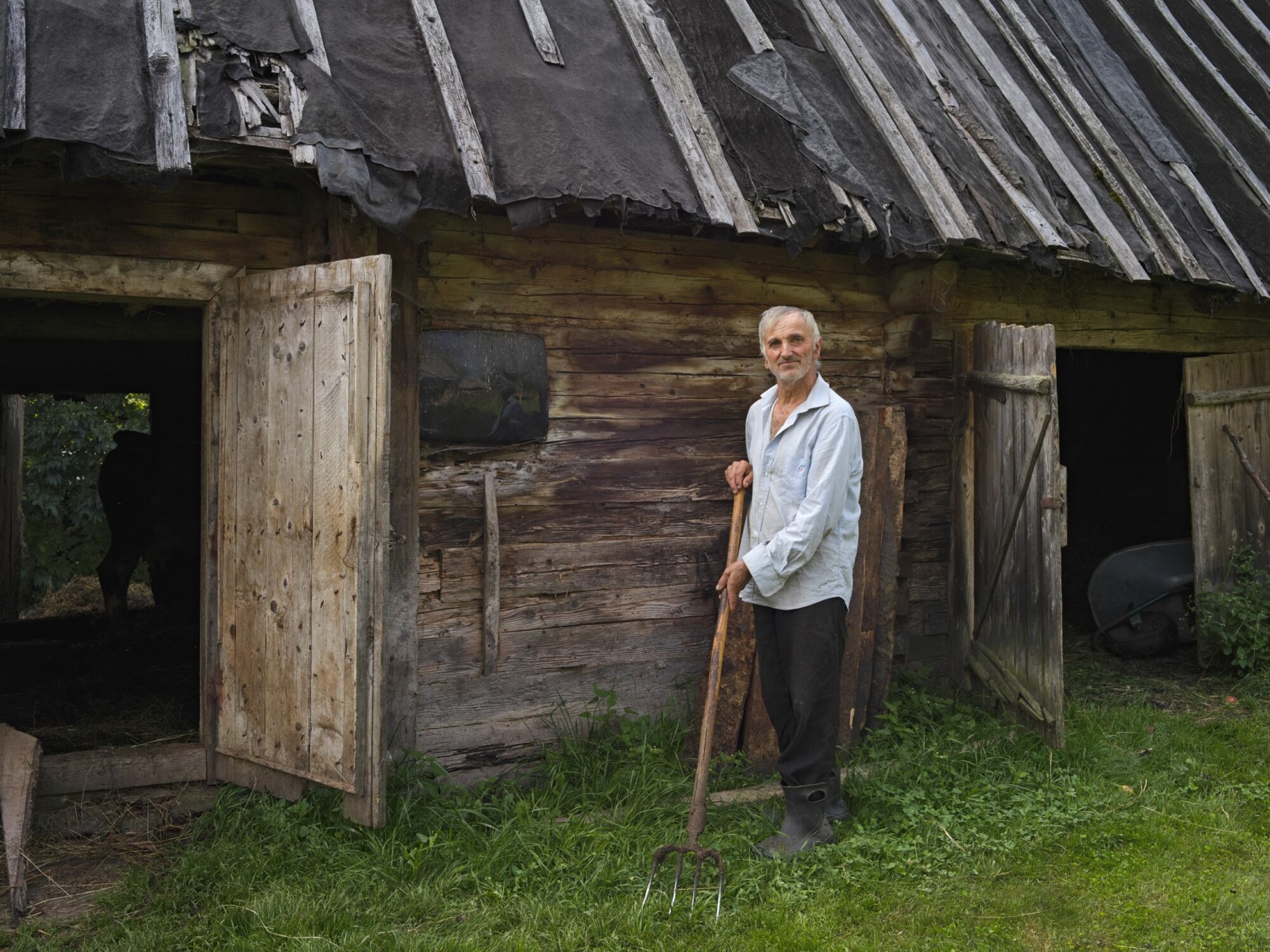
Vasile Oanea
Breb, Maramureș
Peasant, Poet, Photographer
Vasile is a peasant, poet and photographer. He has been photographing every event here for the past 45 years, every harvest festival, every anniversary, every celebration in the area. He is the youngest of eleven children and a designated single, since traditionally the youngest never marries and is expected to care for the parents.
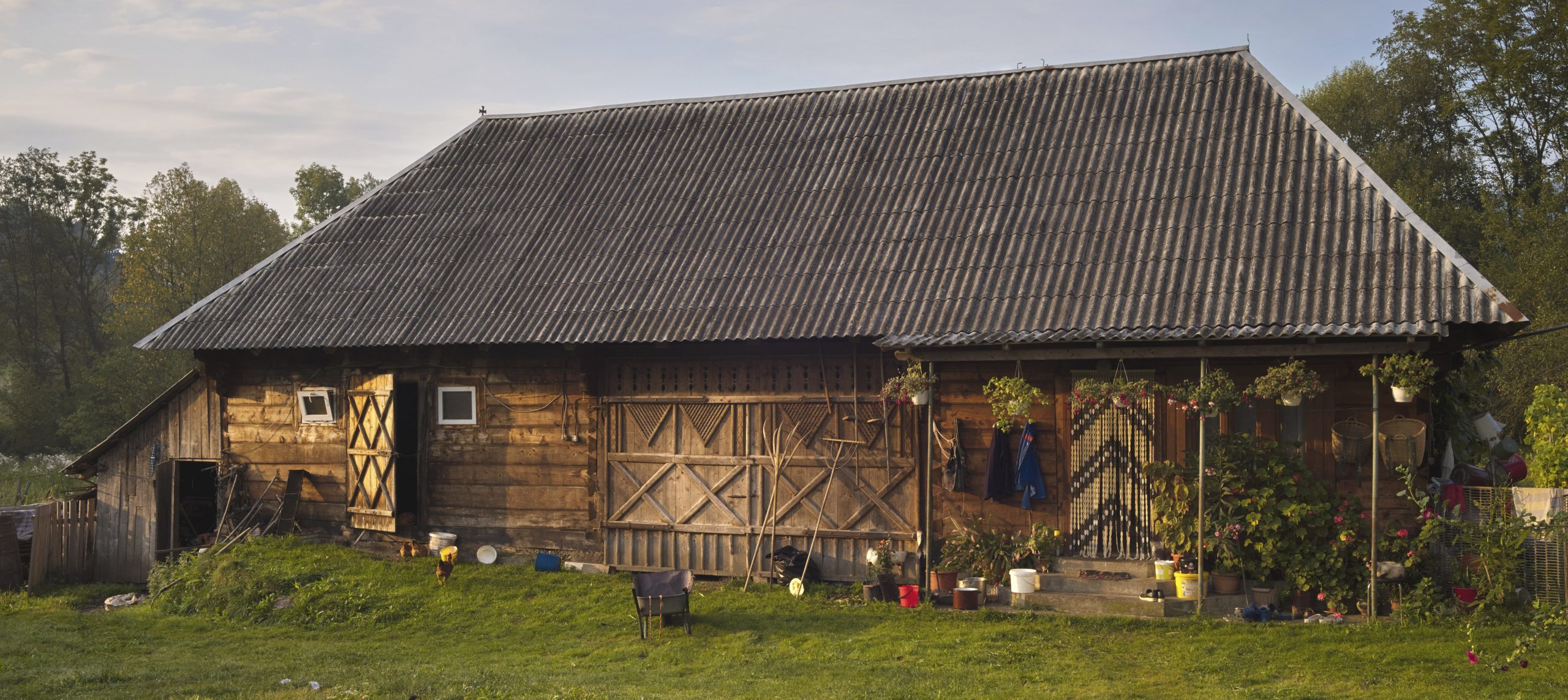
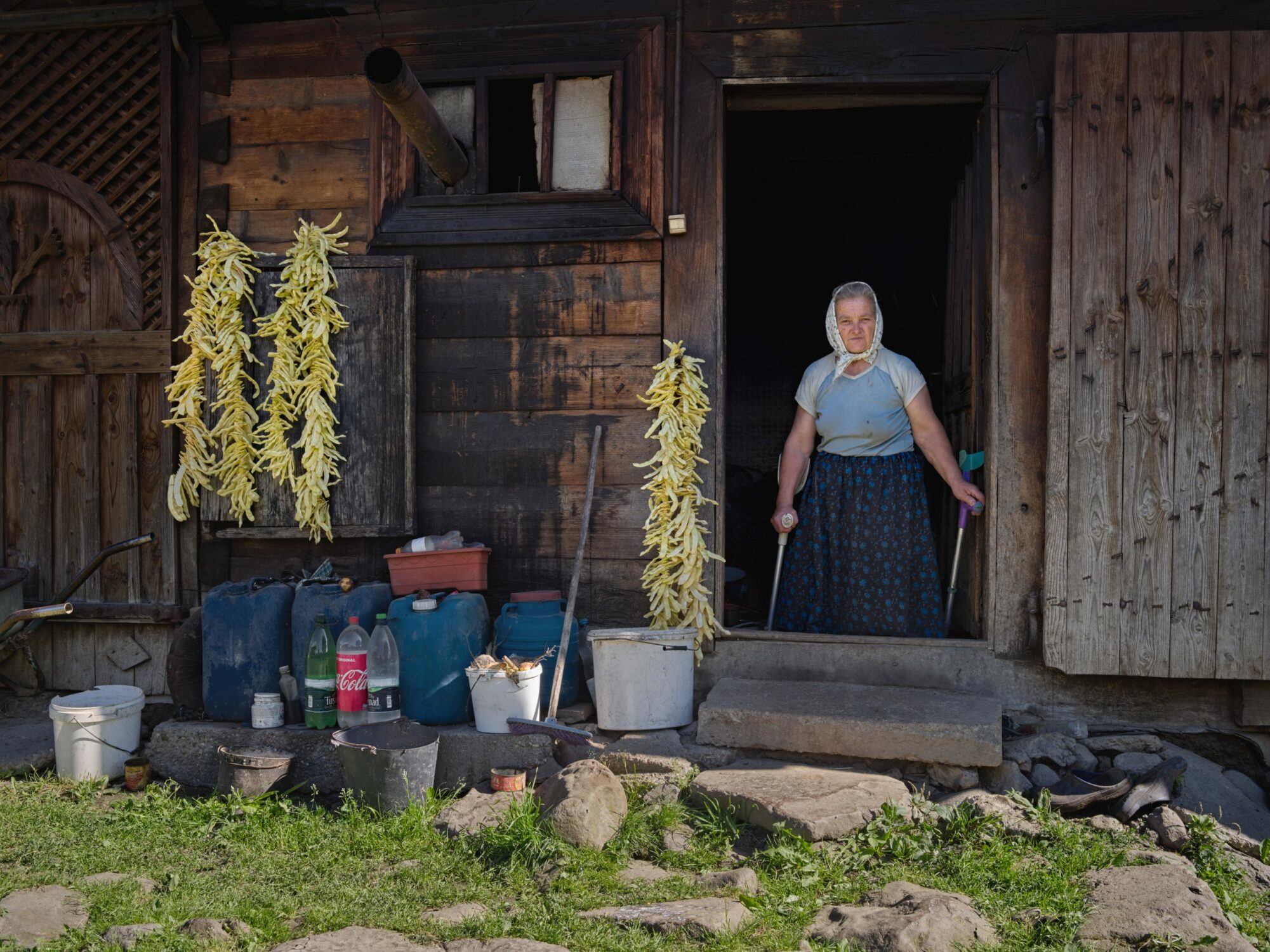
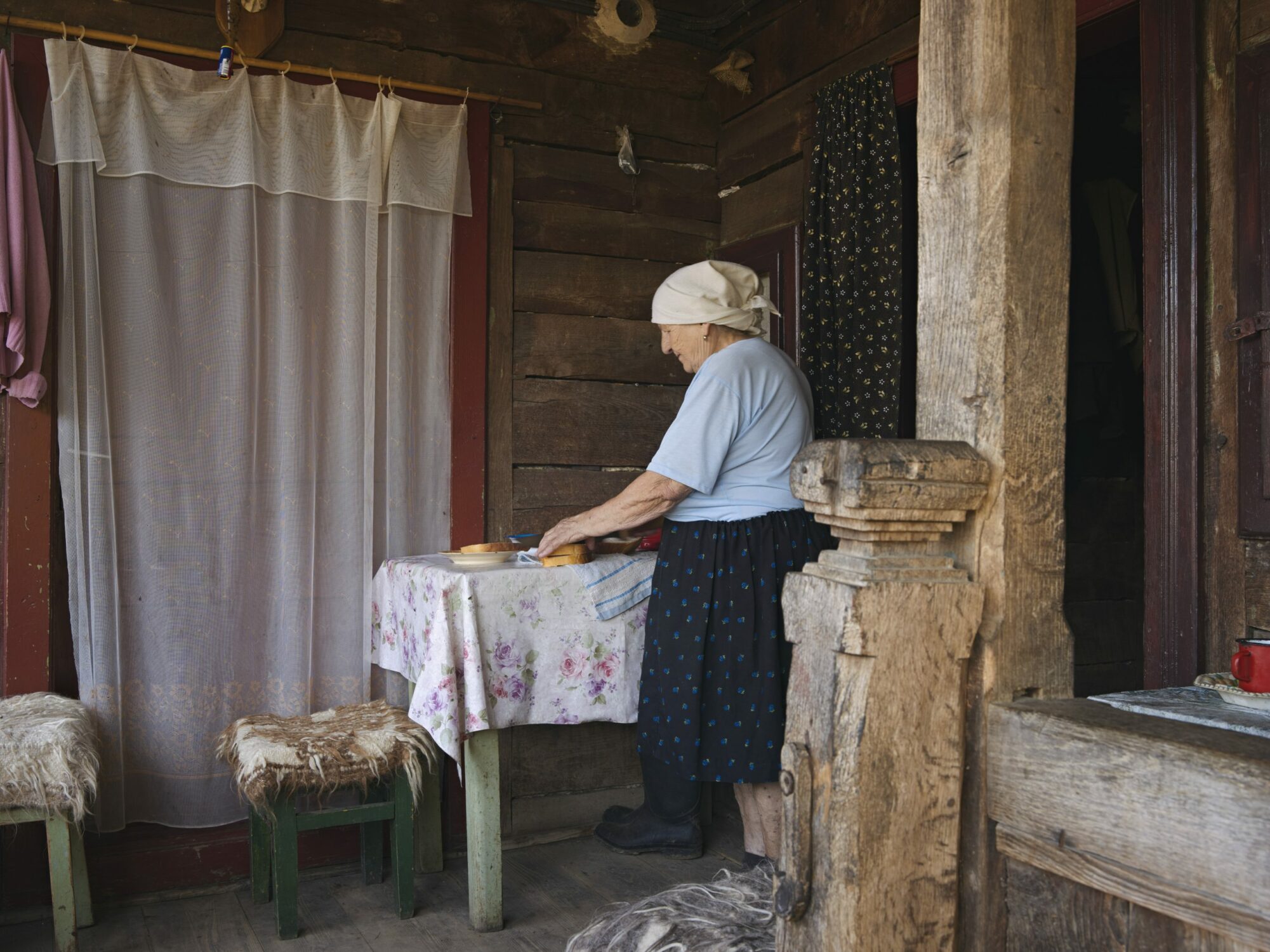

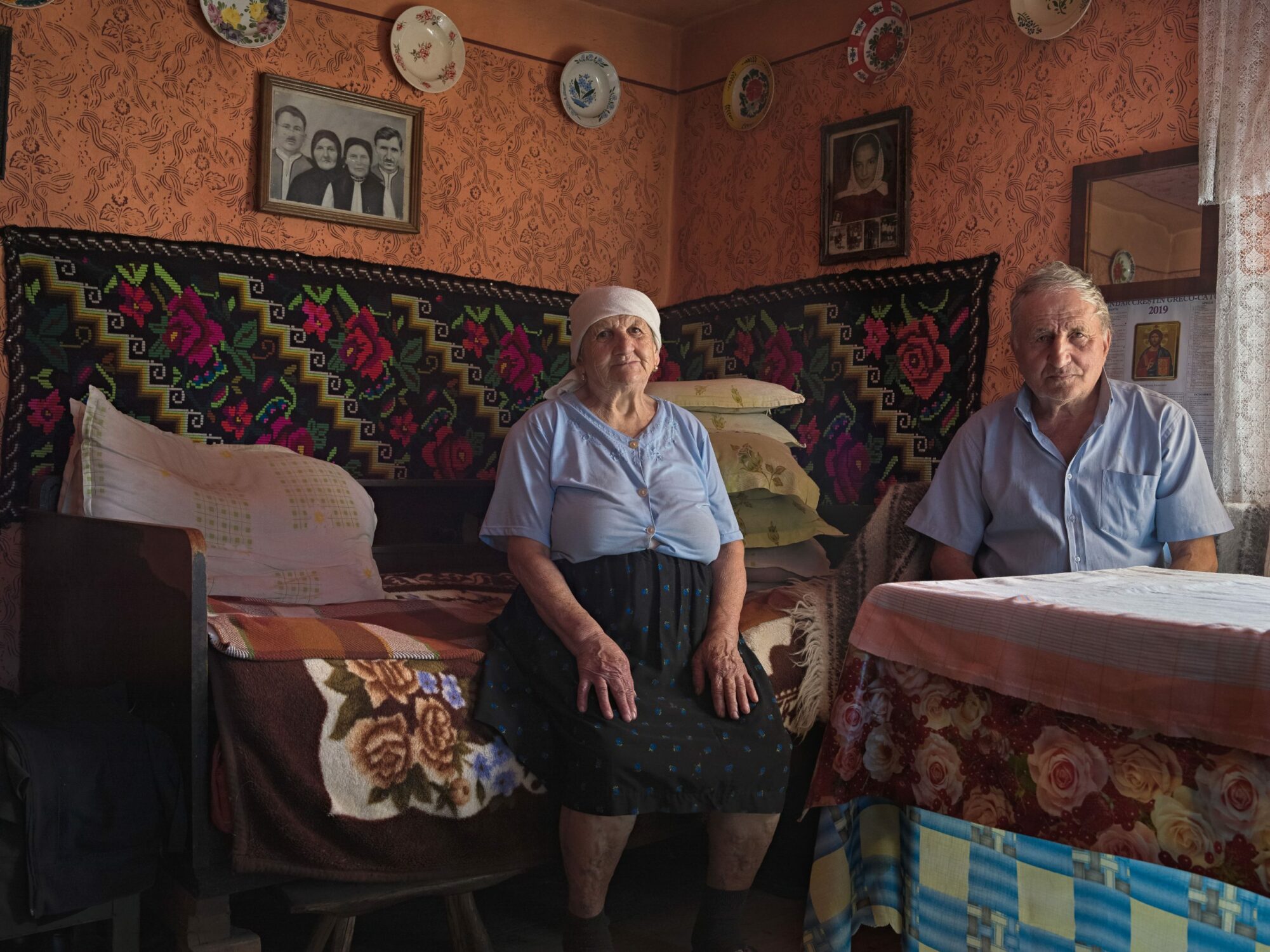
Petru and Ileana Ivanciuc
Corneşti, Maramureș
Romania has the highest level of self-sufficiency in Europe. The millions of small farms are some of the last remaining areas of traditional agriculture on the continent.
They feel deeply proud of the beauty of the land they have inherited. They regard it as their job, their duty, to pass it on.
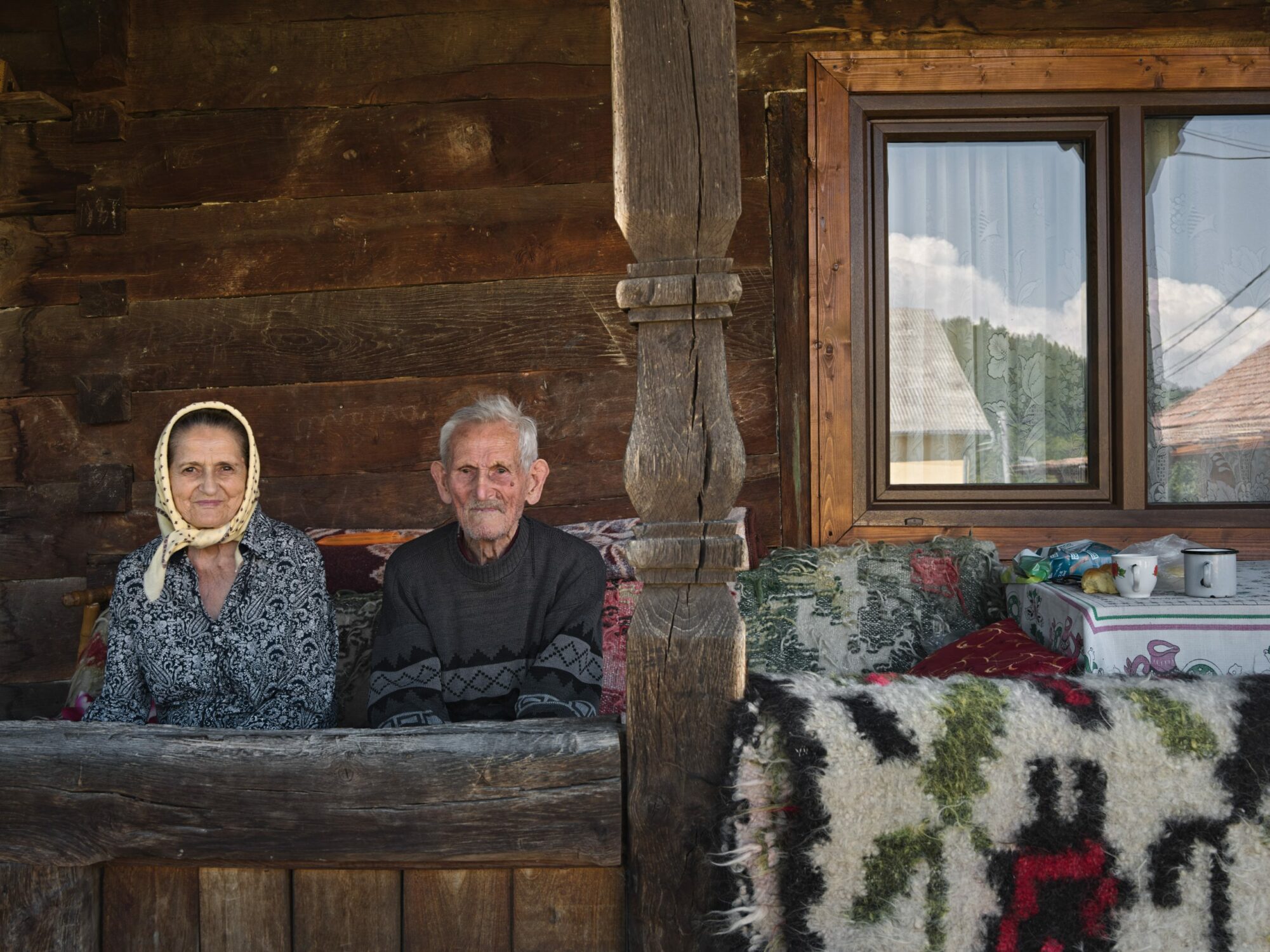
Ion Godja and his daughter Maria
Văleni, Maramureș
Ion Godja is 99. A week after our visit the village celebrates his hundredth birthday. His daughter Maria is 76 and cares for him.
He has written four books about the region and its agricultural practices. He hopes to publish his fifth book in 2020.
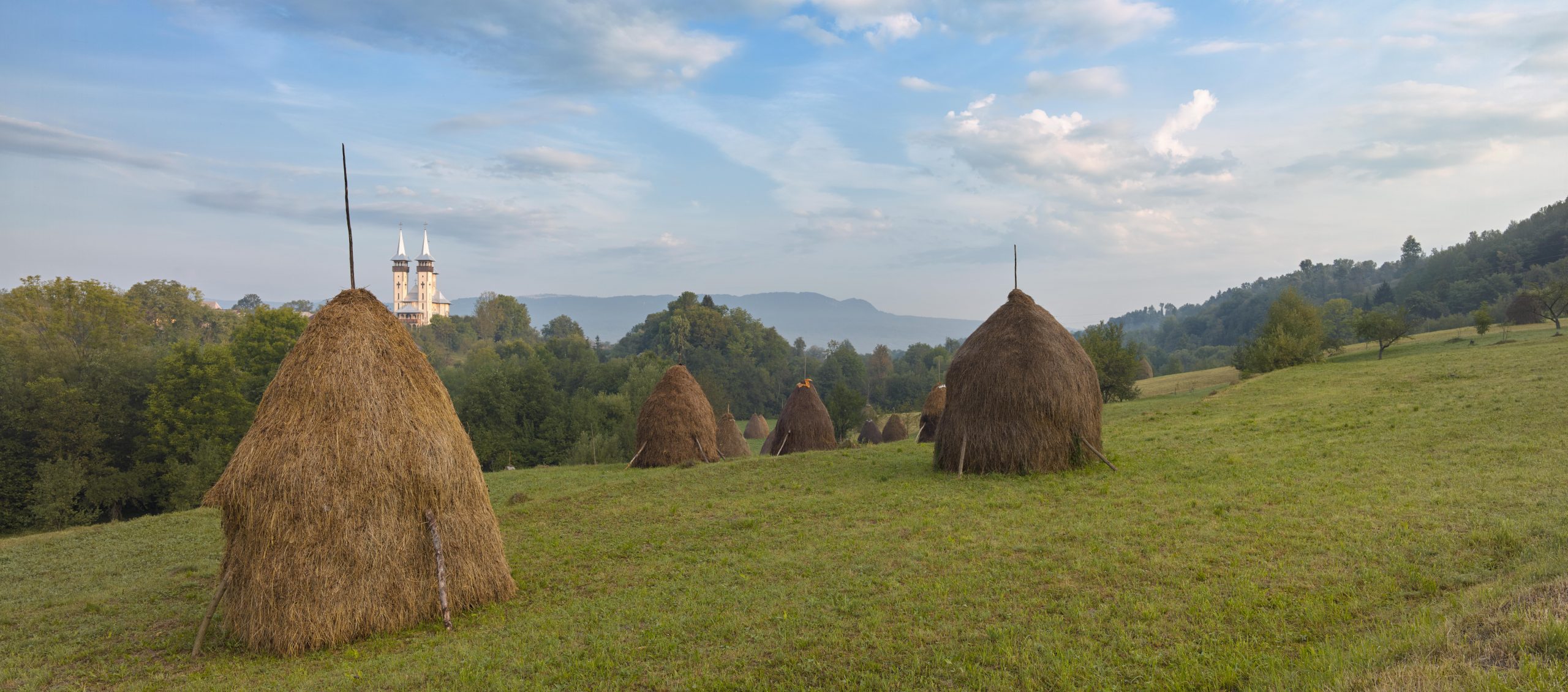
Small-scale agricultural landscapes are resilient and quicker to adjust to climate change and other environmental challenges. They present opportunities for flexible agricultural activities.
They are strongly associated with low-CO2 efficiency, because of their efficient, low-carbon, short food-supply chains, based on local and direct sales.
Family farms in Romania are an important source of agro-biodiversity.
Both fodder crops, including grasses and clovers, and varieties of vegetables and fruit are of crucial importance for food security; they are sources of resilience to future climate change.
Natural forests and permanent semi-natural grassland both function as substantial carbon sinks, benefitting air quality and climate stabilization. Along with the low energy use of traditional agriculture and short supply chains, these landscapes and systems reduce CO2 emissions and limit climate change.
The benefits of HNV Farming
The importance of small-scale family businesses is not economic alone.
Sustainable land use, the preservation of biodiversity and other ecological, social, cultural and economic consequences are crucial benefits of HNV agriculture.
More on HNV Farming
We picked two other stories about High Nature Value Farming
